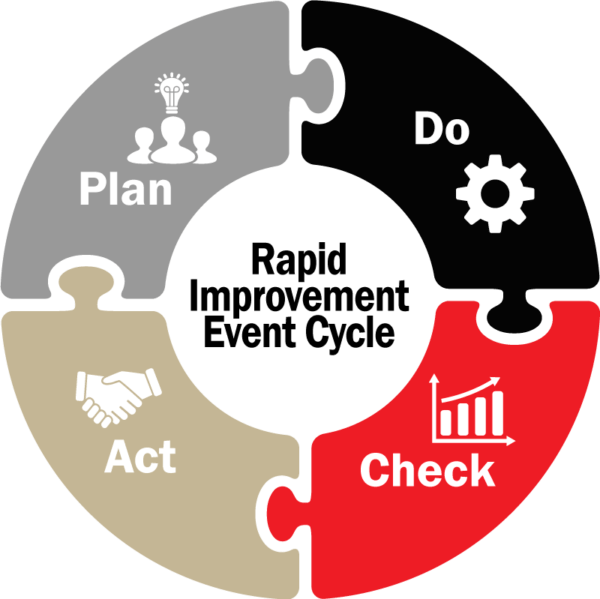Since the publication of “The Machine That Changed the World” by James Womack, Daniel Jones, and Daniel Roos in 1991, companies have sought to improve on the workcell idea. Also known as the kaizen process, workcell benefits are undeniable: minimal waste, reduced production bottlenecks, and — best of all — lowest possible final cost of production. What’s not to like.
The first beneficiaries of workcells were automakers. Their huge production runs of similar, internally planned products yielded immediate rewards. But companies like Ajax face different challenges. Ajax produces products specified by our customers. That means Ajax’s workcell development must be responsive to customer requirements.
Using RIEs To Implement Work Cells
RIEs (Rapid Improvement Events) isolate key departmental managers and tasks them with improving a single business process in a short amount of time. The event is not considered complete until the process improvement actually takes place. RIEs require quite a bit of advance planning to be successful. Most of the prep work involves gathering decision-making data so that the process does not stall. Top management must also make sure the RIE team feels free to make important decisions. Some of these decisions may require significant changes within the organization. That can cause disruption.
“REIs aren’t necessarily easy,” said Ajax Vice President of Sales and Marketing Don Wellman. “It’s all about making our processes better for our customers.”
“We place emphasis on the rapid part of RIEs,” Don continued. “Corporate speed makes a big difference when working with world-class OEMs. We need to move as fast as they do.”
Don said Ajax plans on doing at least three RIEs this year. “Workcells are a priority with our RIEs, since they yield so many benefits that directly improve customer service and value”.

